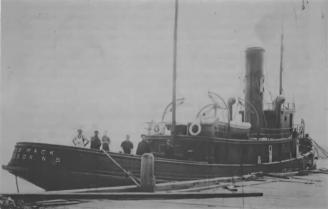

copyright © Wartime Heritage Association
Website hosting courtesy of Register.com - a web.com company
Wartime Heritage
ASSOCIATION
Remembering World War I
Yarmouth Connections
Albert J Muise
The name, Muise, Albert J. appears as the 108th WWI name on the Yarmouth War Monument. No military record can be
found; however, his story and why his name appears is unique.
He was the son of Thomas Jean Athanase Muise (1878-1949) and Marie Louise Dora (Amirault) Muise (1878-1927) of
Yarmouth. His parents eventually moved to the United States and are both buried in Saint Joseph Cemetery, West Roxbury
Suffolk Co., Massachusetts. He had two brothers and eight sisters.
Albert is also known as Joseph Henry and Charles Joseph, according to local Yarmouth historian, Arthur Thurston. In his
book, A Monument Speaks, Thurston writes that Albert was a military recruit in the closing weeks of the war. Under the name
of Joseph Henry Muise, his date of birth is recorded as April 15, 1903 and his date of death is recorded as May 16, 1921; in
November of 1918, the last month of the war he was only 15 and in May of 1921 he had just turned 18.
Thurston relates that “the mode of his death was so horrifying and so public the Monument Committee assured that his
name appear”.
The tugboat Otis Wack was built at Parrsboro NS by W.R. Huntly &
Sons and launched on April 9, 1921. The tug was built as an ocean going tow
boat for the Gypsum Packet Company of Windsor NS to tow barges to Staten
Island, New York. The hull was towed to Yarmouth, NS and docked at the
wharf of the New Burrell Johnson Iron Company to have her engine, boiler,
and other related machinery installed.
Work on the tugboat Otis Wack was under way and Albert was
employed as a helper to four boiler makers, George MacDonald, Andrew
Norman, John Thibodeau and Fred Maynard. Albert was working on the
inside of the large boiler recently put aboard the tug. A paraffin vapour
torch on the end of a hose which led from the tank for heating the plates was being used. Albert was in the lower part of the
boiler and under one of the furnaces that had been installed. The other four men were above the furnace. Suddenly the torch
was blown from the hose and the interior of the boiler was filled with flames. The four above the furnace managed to escape.
Albert received the full force of the explosion and the fire and burning oil descended upon him. Despite his condition, he
managed to climb to a manhole and his burning body was pulled from the burning boiler. The fire was extinguished and he was
administered first aid until an ambulance arrived and he was taken to hospital.
His injuries were severe, the left side of his forehead, face, his shoulders and arm, together with both his legs and feet
were so badly burned that survival was impossible. He survived for thirty-six hours, dying on Monday, May 16, 1921.
His funeral was held at St Ambrose Roman Catholic Church at 7:00 am, Thursday, May, with Rev. Hamilton officiating at the
largely attended service. He is buried in Our Lady Of Calvary Roman Catholic Cemetery, Yarmouth, NS.
Remembering Albert J. Muise


Otis Wack


- World War I - Menu
- WWI Stories and Articles
- Photos - Yarmouth Soldiers
- Selection of World War I Songs
- WWI Casualties of Yarmouth, NS
- Those Who Served - Yarmouth, NS
- WWI Casualties Digby Co. NS
- WWI Casualties Shelburne Co. NS
- Merchant Mariners (1915) Yarmouth, NS
- Canadian Forestry Corps - Non Yarmouth Birth/Residence Enlistments
- US Draft Registry - Yarmouth NS Born


- World War II - Menu
- WWII Stories and Articles
- Telegraphist Air Gunners
- WWII Casualties of Nova Scotia
- US Casualties with NS Connection
- Far East/Pacific Casualties with NS Connection
- Merchant Navy Casualties Nova Scotia
- Nova Scotia WWII Casualties Holten Canadian War Cemetery
- D-Day Casualties - Nova Scotia
- CANLOAN Program Casualties - Nova Scotia
- Battle of the Bulge Casualties - Nova Scotia
- WWII Casualties Yarmouth NS
- Yarmouth Casualties - RCAF RAF Canadian Army WWII
- Yarmouth Co., Marriages WWII
- Casualties Non-Born/Residents with Connection to Yarmouth Co., Nova Scotia.
- WWII Casualties Digby Co., NS
- Non-Nova Scotian WWII Casualties Buried in Nova Scotia
- WWII RCAF Casualties Aged 16-18
- Brothers/Sisters Who Served - World War II













